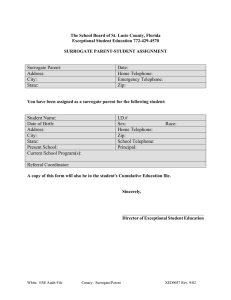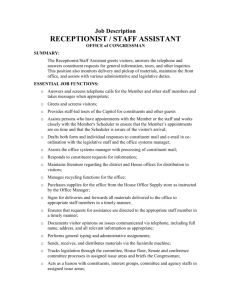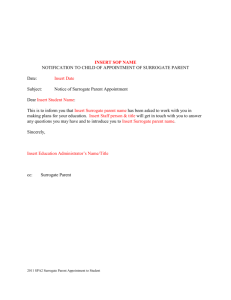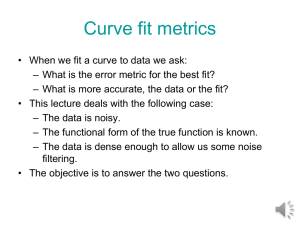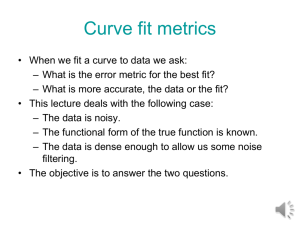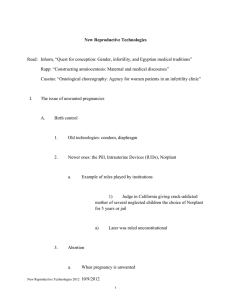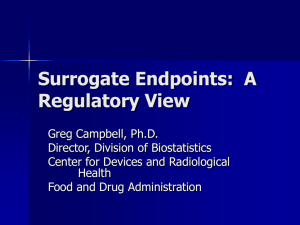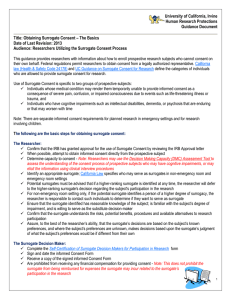Site Selection
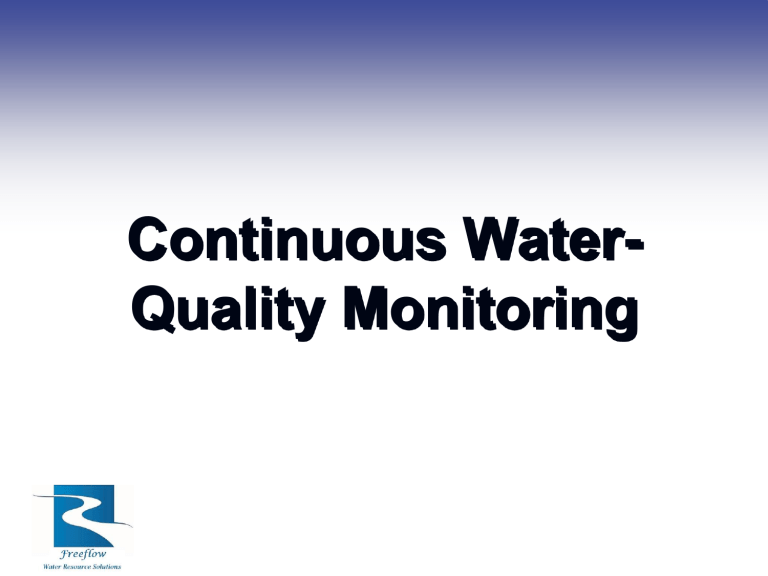
Continuous Water-
Quality Monitoring
Continuous Water Quality
Monitoring
Advantages
Needed in rapidly changing systems
Provides better understanding of interaction between constituents
Provides better understanding of transport processes
Disadvantages
Equipment costs are greater
Operation and maintenance costs are greater
Vulnerable to damage and/or loss
Relations Between Parameters
DO and pH
DO and pH track together
Diurnal Pattern
Why?
Relations Between Parameters
DO and Temperature
Supersaturated
DO
DO crash in
June
Variation in
DO changes seasonally
Relations Between Parameters
Turbidity –vs- Discharge
Discrete vs Continuous
Monitoring
Other Surrogate Possibilities
Continuous Parameter(s)
Specific Conductance
Turbidity
Turbidity + Temperature
Surrogate Constituent
TDS, Total Nitrogen
Suspended Sediment, Total
Phosphorous
Bacteria
Relations are developed using discrete samples and linear regression
Regression model used to synthesize continuous record of target parameters that are difficult to monitor.
Parameter -vs- surrogate relations are not universal but site specific
Applications
Continuous monitoring the constituent or its surrogate to aid in identifying occurrence and duration of waterquality parameters that exceed regulatory limits.
Relation between SC and TN
1,8
0,2
0
0
-0,2
-0,4
1,6
1,4
1,2
1
Proposed Regulatory Limit = 1.0 mg/L
0,8
0,6
Difficult to monitor
0,4
100 200 300
Easy to monitor
SC (uS/cm) ln(TN)
Линейная (ln(TN)) y = 0,0041x - 0,6367
R² = 0,902
400 500 600
Applications (cont)
Identify and optimize periods for sample collection
Quantify constituent loads
(volume/time)
Familiarity with the site and data will lead to a better understanding of physical processes and interactions between constituents
